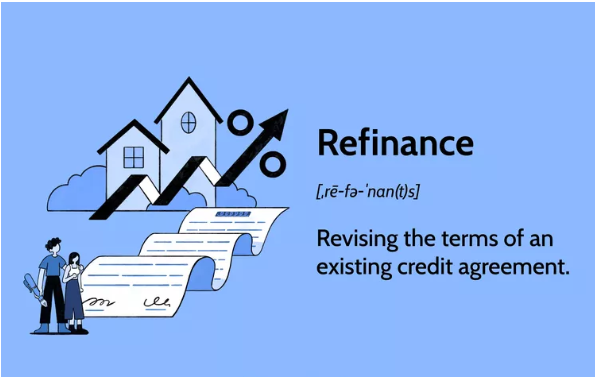Refinancing Loans: When Does It Make Sense?
Refinancing a loan means replacing your existing loan with a new one usually with better terms. It can be a smart financial move, but it’s not always the right choice. Knowing when to recapitalize can help you save money, reduce monthly payments, or pay off debt faster.
What Is Loan Recapitalize?
When you recapitalize, you take out a new loan to pay off your old one. This can apply to many types of loans, including:
-
Mortgages
-
Auto loans
-
Personal loans
-
Student loans
The main goal is to improve your loan terms whether that’s a lower interest rate, smaller monthly payments, or a different repayment timeline.
Reasons People recapitalize
-
Lower Interest Rates
If market rates have dropped or your credit score has improved, recapitalize can help you secure a lower rate and save on interest costs. -
Reduced Monthly Payments
Extending your repayment term spreads out your balance, lowering your monthly payment (though you might pay more interest overall). -
Shorter Loan Term
Switching from a 30-year to a 15-year mortgage, for example, can help you pay off debt faster and save thousands in interest. -
Switching Loan Types
For example, moving from a variable-rate loan to a fixed-rate loan for stability. -
Debt Consolidation
Recapitalize can merge multiple loans into one payment, potentially at a better rate.
When Recapitalizing Makes Sense
-
Interest rates are significantly lower than when you first borrowed.
-
Your credit score has improved, unlocking better terms.
-
You plan to keep the asset (like your home or car) long enough to recoup refinancing costs.
-
You want to remove a co-signer from the loan.
-
You have high-interest debt and can refinance to a lower rate.
When Refinancing Might Not Be Worth It
-
The closing costs or fees outweigh the savings.
-
You’re near the end of your loan term.
-
You’ll move or sell the asset soon.
-
The new interest rate isn’t much better than your current one.
How to Calculate the Break-Even Point
The break-even point is how long it will take for your savings from refinancing to cover the cost of refinancing.
Formula:
Break-even point (in months)=Refinancing costsMonthly savings\text{Break-even point (in months)} = \frac{\text{Refinancing costs}}{\text{Monthly savings}}
If you’ll stay in the loan longer than the break-even point, refinancing could make sense.
Key Steps to Refinance
-
Check your credit score – better scores get better rates.
-
Shop around – compare offers from multiple lenders.
-
Factor in all fees – appraisal, closing costs, and origination fees.
-
Run the numbers – make sure you’ll save in the long run.
Bottom Line
Refinancing can be a powerful money-saving tool, but only if the benefits outweigh the costs. Evaluate your goals, crunch the numbers, and choose the option that fits your financial plan.


